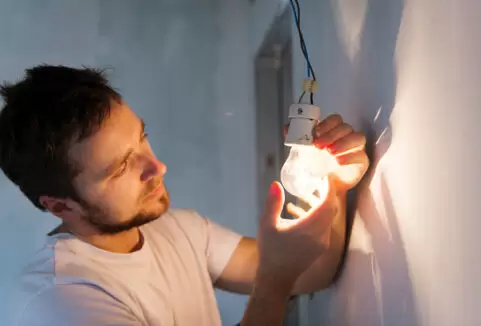Deploying strategic and cost-effective methods can notably decrease your expenditure on home upkeep, permitting a more astute distribution of your financial resources. These judicious strategies not only help you manage the budget but also ensure that no compromise is made concerning the coziness or functionality of your abode. These strategies provide financial ease while ensuring our living spaces remain welcoming.
1. Regular Maintenance and Inspections
Regular maintenance and timely inspections are key to preventing costly repairs. Schedule routine checks for your HVAC systems, plumbing, and electrical wiring to identify potential issues before they escalate into major problems. Follow recommended maintenance schedules, such as pumping and emptying your septic tank every three to five years, as suggested by Bob Vila.
This principle of proactive attention is particularly true for septic tanks. Neglecting regular pump-outs can lead to unpleasant backups or even complete system failure – far more costly and inconvenient than routine service appointments.
2. Energy-Efficient Upgrades
Delving into the world of energy-efficient upgrades, we discover a potent tool for sustainable living. Shrewd spending on energy-conscious upgrades trims your monthly utility costs and staves off the relentless bite of maintenance expenses in the long run. Imagine swapping out power-guzzling appliances for their energy-efficient counterparts or exchanging old-school bulbs for LED lighting. Think about smart thermostats controlling temperature settings precisely—eliminating wasted heat or cooling.
In 2020 alone, according to data from the International Energy Agency (IEA), around 180 million heat pumps were employed globally for temperature control purposes—an indication of our increasing reliance on such devices. Upgrading appliances is good; adding smart thermostats brings value; switching to LED lighting pays off; you’re striking at the heart of energy efficiency while promoting environmental sustainability.
3. Address Water Leaks and Conservation
While the urgency of water conservation might seem distant, the truth is starkly closer to home. Addressing even minor leaks in our homes can make a monumental difference. Astonishingly, about 10% of U.S. households have leaks that waste 90 gallons or more daily! If every American household fixed their drips and running toilets promptly, we’d save nearly one trillion gallons annually.
Embrace efficient fixtures such as low-flow showerheads and dual-flush toilets—they offer impressive potential savings without compromising functionality. For instance, swapping out old inefficient models for WaterSense-labeled ones can reduce usage by around 20%. Implementing these simple yet effective strategies will aid us immensely in conserving this life-sustaining resource—not just for ourselves but for future generations.
4. DIY and Preventative Measures
Learning do-it-yourself (DIY) repair and maintenance skills can significantly reduce your reliance on professional services and lower home maintenance expenses. Embracing a hands-on approach to maintaining your home fosters self-reliance and alleviates the financial burden of professional services. Start by acquiring knowledge in essential household tasks such as interior and exterior painting, application of caulk for sealing gaps, and tackling minor plumbing issues like fixing leaks or replacing worn-out fixtures.
Adopt a routine that includes clearing your gutters, nurturing your yard, and performing seasonal checks on roofs and outdoor structures. This can help catch issues before they escalate into major problems. Moreover, making seasonal assessments of roofs and other external structures helps catch potential problems early.
5. Financial Planning and Emergency Fund Allocation
Creating a dedicated budget for home maintenance and allocating funds to an emergency savings account can provide you with financial security and peace of mind. Plan for anticipated maintenance expenses, such as HVAC system servicing, roof repairs, and appliance replacements, and set aside a portion of your monthly budget to cover costs. You fortify your economic resilience by designating a financial safety net for unexpected home-related costs. This strategic allocation helps mitigate the risk of sudden expenditures disrupting your fiscal equilibrium.
Consider investing time and money into upgrading rather than repairing outdated components; this move guarantees long-term benefits by adding years onto their lifespan and enhancing aesthetics markedly. In essence, conscientious homeownership isn’t just about preserving what we have.

